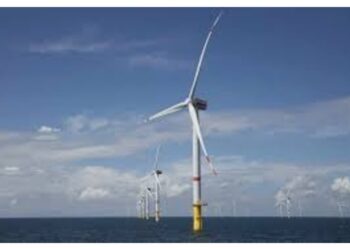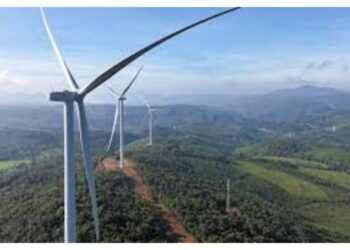The Ministry of New and Renewable Energy (MNRE) has released guidelines for the implementation of the Viability Gap Funding (VGF) scheme for 1,000 MW offshore wind power projects. The project has been allotted Rs 68.53 billion till FY 2031-32 with an objective to commission 1 GW offshore wind power projects. A 500 MW project site off the Gujarat coast has been identified by National Institute of Wind Energy (NWIE), the nodal agency, with another 500 MW site off the Tamil Nadu coast awaiting finalisation. The Solar Energy Corporation of India (SECI) is the implementing agency and it will float tenders for the 500 MW offshore project in Gujarat.
SECI will conduct an international competitive bidding process, inviting bids where developers must quote the required VGF per MW in their financial bids. Developers can add up to 50 MW in extra capacity (not exceeding 550 MW). This additional capacity will be awarded at the lowest VGF discovered during the bidding process. If the allocated VGF is insufficient, the project capacity will be adjusted in 10 MW increments, followed by a revised Request for Selection (RfS). The financial bid will include the VGF amount, and bidders must demonstrate experience in offshore or onshore wind projects in India. Financial criteria include net worth, asset management, and turnover from the last three financial years.
Further, the VGF will be released in phases: 25 per cent upon completing the foundation work, 35 per cent after commissioning half of the project capacity, another 35 per cent after the full capacity is commissioned, and the remaining 5 per cent after one year of operation. Developers must match the first VGF instalment with an equal amount of equity or debt before receiving funds.
The commissioning of projects will take place within 48 months of signing the PPAs. They will be designed for inter-state transmission systems (ISTS) in line with Central Electricity Regulatory Commission guidelines. The developer is responsible for power evacuation to an offshore pooling substation and a part of the ISTS network. The substation and transmission work will be constructed by the Central Transmission Utility (CTU). The developers are responsible for connecting the project to the substation at a 66 kV voltage level. SECI will help coordinate with the CTU on the location of the offshore substation. The projects will be regularly monitored. Simultaneous commissioning of evacuation infrastructure and wind projects may also take place. Penalties have been put in place to deter inefficiencies.













